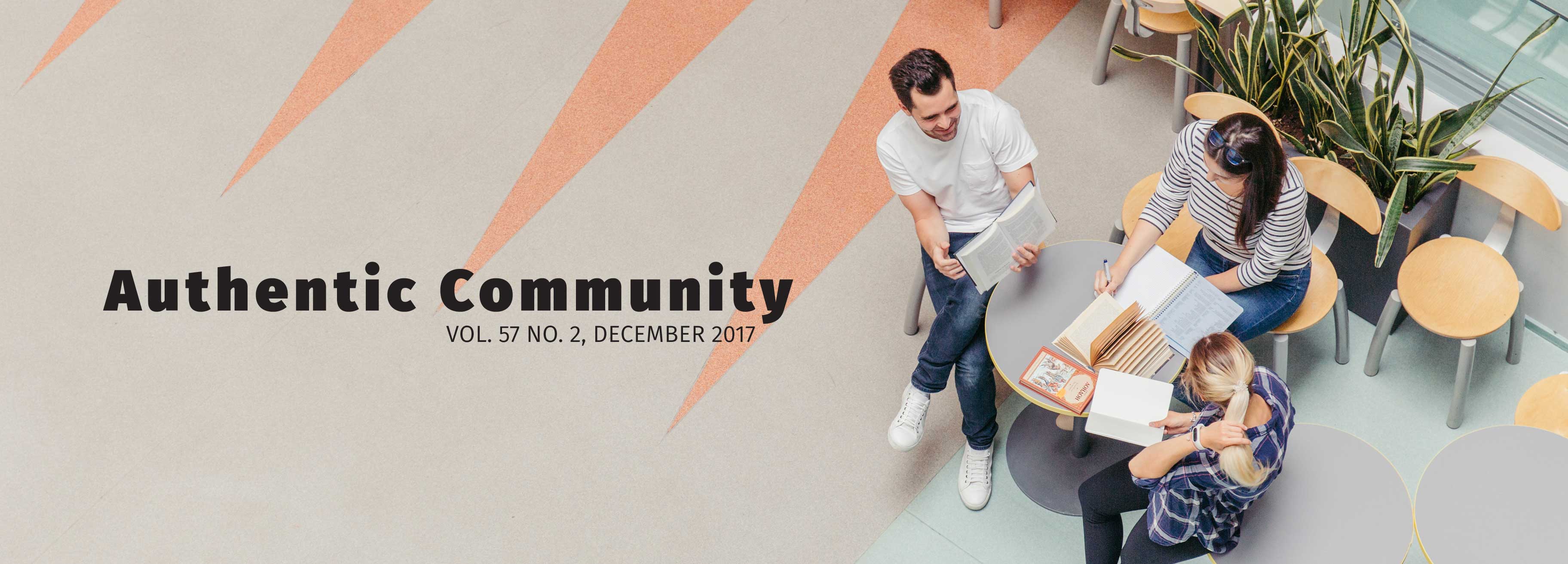I had the privilege of “sitting down” (via video conference) with our three panelists—Rebecca DeSmith, Gayle Monsma, and Justin Cook—to talk about authentic community.
John: The focus of our conversation is the idea of authentic community in our schools and classrooms. To begin, then, let’s just start from our perspectives. How do you define authentic community?
Rebecca: Well, I’ll begin. When I think of authentic communities, I think of genuine relationships that are built on trust, respect, and a common goal or mission. It’s pretty simple, but that’s a place to start.
Gayle: I’ll just sort of build on something that Rebecca said that I hadn’t necessarily thought about before – that it’s built on a common goal or mission. I think that’s just a really intriguing idea of what authentic community is. It raises it to the next level beyond just collegial work. It makes it more interesting if you start to think about that and about who, then, you actually have authentic community with. There needs to be somebody that you have that common goal or mission with.
John: So let me follow up with this question, again building on that idea of a common goal or mission: what are the implications of that for me as a classroom teacher or for me as a school leader? What do I do then to build that authentic community related to that idea of a common goal?
Rebecca: In a school, there are a lot of relationships to build: teacher-to-teacher, teacher-to-student, administration-to-teacher, administration-to-student. I’ve actually read some professional articles in the past few months that have said that authentic communities–genuine relationships–begin with administration. What they do to set the climate in the school really makes a huge impact on teacher-to-teacher relationships, student-to-teacher relationships, really all of those relationships. The emphasis should be on moving away from the top-down model of administration to a model that demonstrates respect and a focus on building relationships that are positive and show value for faculty and students.
Gayle: Early in my career, I read some stuff by Roland Barth, and he talked about that idea that the model of how the school leadership relates with the faculty or the staff then is reflected in how the staff deals with their students. It’s a pretty scary thing sometimes; that’s an intimidating idea. But I think it’s probably true. It’s hard to see when it’s in your own building, but I think when you go to other places it becomes maybe more evident. It’s hard to see I guess, like the idea that a fish in water doesn’t recognize its environment.
Justin: I think good leaders create structures in which to understand and know the voices and the opinions within the community. Whether it’s restorative practices of check-in circles or overtly naming norms that define the culture that all of us want to commit to in order to be a flourishing learning-community. There are many ways to structure the type of relationships that Rebecca is referring to.
Justin Cook serves as the Director of Learning at the Ontario Alliance of Christian Schools in Ancaster, Ontario.
Rebecca DeSmith serves as Discovery Program coordinator and teacher at Sioux Center Christian School.
Gayle Monsma serves as the Executive Director for The Prairie Centre for Christian Education in Edmonton, Alberta.
John Walcott is assistant professor in the education department at Calvin College.
